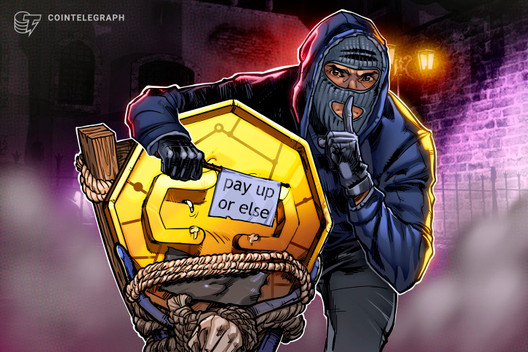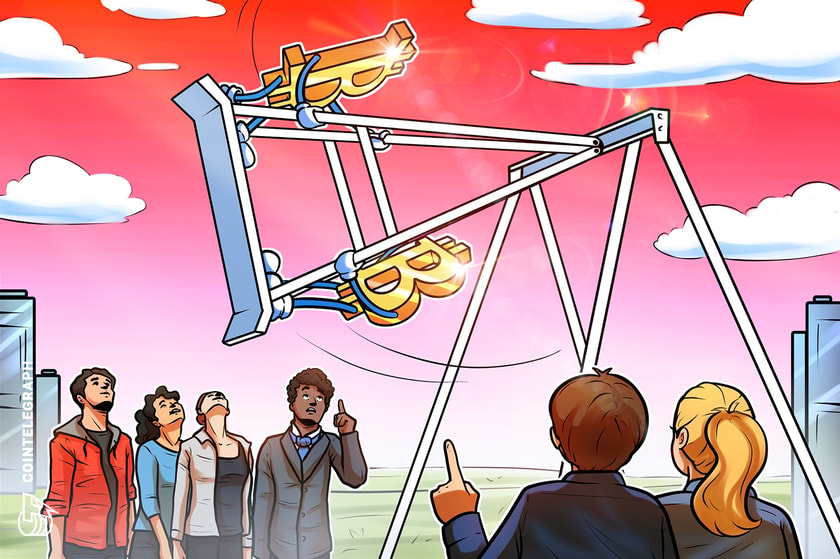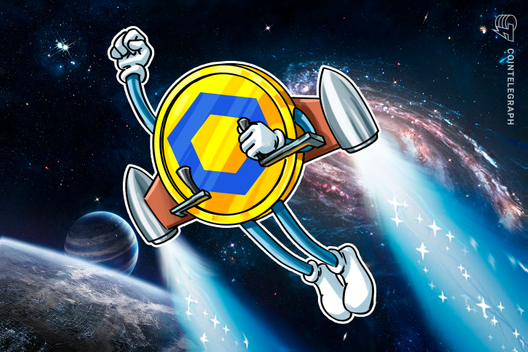How to Capitalize on Bitcoin’s Halving Volatility Using BTC Options
Many investors believe a significant price swing is about to happen, as the next Bitcoin (BTC) halving is now less than 15 days away. Despite its demonstrated and incredibly long term potential, no one knows for sure how exactly Bitcoin’s price will respond during and after the third halving.
Fortunately, this time, the market has matured to the extent that traders can now deploy strategies to generate gains on both sides of Bitcoin’s price action. Derivatives markets are a relatively new addition to the crypto market, and over the past two years, they have developed enough to allow investors to apply more complex investment techniques.
Halving-related volatility provides lucrative opportunities
Historically, volatility increases leading to and after the Bitcoin halving. Volatility measures the strength of day-to-day price fluctuations, and the calculation usually entails periods of 30, 60 and 365 days to analyze historical data.
Skipping the tedious mathematical definition, it is possible to conclude that assets like Bitcoin and oil have a much higher volatility than the euro, Swiss franc or real estate mutual funds.

Bitcoin 30-day volatility, 2016. Source: BuyBitcoinWorldWide
Bitcoin’s volatility usually increases close to its halving, an event that occurs every four years and reduces the issuance of new BTC for each mined block. Notice in the chart above how the peak 30-day volatility coincides with the 2016 halving on July 9.
This increased volatility happens because there is significant uncertainty surrounding the halving. Despite its positive impact, there is not a constant demand for Bitcoin buyers. For this reason, the reduction in supply caused by the halving does not produce an immediate result.
Halving the BTC mining reward could increase volatility
Some miners will shut down machines due to the subsidy drop. Even those who have a low energy cost might forcibly shut down older devices such as the Antminer S9 because of their lower energy efficiency.
This computing power drop protecting the Bitcoin network is the main factor behind this uncertainty. Currently, there is concern of a death spiral, forcing large miners to sell reserves, and even bankrupting those who are more leveraged.
Although not rational, this agitation caused by the hashrate drop ends up impacting the price. This also leads to an abundance of articles claiming that the network is less secure and subject to 51% attacks.
The sudden drop in Bitcoin’s hash rate after March’s price drop caused the head of operations at Genesis Mining to cite further miner selling activity, leading to a potential “miner’s capitulation cycle.”
How options traders exploit volatility spikes
Contrary to popular belief, the derivatives market does not consist entirely of gamblers and leverage. Derivatives trading is nothing new for institutional investors, although options volume has been gaining momentum in Bitcoin trading.
According to CNBC, notorious hedge fund manager Bill Ackman recently profited by more than $2 billion using options to hedge his portfolio’s exposure. Such a strategy does not mean Ackman’s Pershing Square was betting on markets nosediving, but instead, it was used as insurance to cover existing positions as potential setbacks.
Options trading presents a whole new set of opportunities for investors seeking to profit from increased volatility, obtaining protection from sharp price drops, or maximizing gains if the price remains in a specific range.
Those complex trades involving more than one instrument are known as structures. Most use a couple of different option contracts and sometimes include BTC holding or future contracts.

Bitcoin’s current 60-day volatility. Source: BuyBitcoinWorldWide
The Black Thursday price crash caused a spike in the volatility, especially when we look at a shorter period of 30 days. Even when analyzing a span of 60 days, one can see that daily price fluctuations were at the highest level in six years.

February and March Bitcoin price volatility. Source: Investing.com
The last two months have escaped the ordinary, even for those used to cryptocurrencies’ volatile price swings. Keep in mind that the collapse that occurred in Bitcoin’s price also happened in the S&P 500, oil and treasuries.
Recently, the volatility of almost every dominant asset class has reached its highest levels since 2008. A reduction in Bitcoin’s volatility is likely to happen ahead of its halving, although remaining well above average.
Capitalize on bull and bear moves
For those unfamiliar with options trading, Cointelegraph recently published an article detailing all of the ins and outs of the process, including the benefits over futures contracts trading. Instead of profiting from additional volatility, leverage traders will tend to get liquidated, or forcibly terminated more often than those who trade options.

Call and put options explained. Source: Napkin Finance
To benefit from sizeable unexpected price swings, one can buy both a call and a put option. Thus, if the price of Bitcoin goes up, the buyer will discard the put option. The reverse occurs if the price drops below the option strike. This strategy is known as “long straddle.”
The problem with this strategy is the high cost of buying both options, especially in highly volatile assets such as Bitcoin. Below is the quote of both options due on May 29, 2020.

Call options market, expiry May 29. Source: Deribit
For this privilege or right to be able to buy Bitcoin for $7,000 on May 29, one needs to pay $797 for each Bitcoin. Think of this value as insurance — protection — in case the cryptocurrency rises above this value. Follow the chart below to understand the profit or loss at each level:

Theoretical return for a call option buyer
In the example above, it is possible to make a profit with any price above $7,797 at maturity. Remember that it is possible to sell the option to someone else halfway. The higher Bitcoin goes up, the greater the gain from this sale.
Let’s simulate the return of buying a put, a right to sell Bitcoin for a predetermined price in the future:

Theoretical return for a put option buyer. Source: Deribit
Note that this time, the put buyer profits as Bitcoin’s price falls, unlike the call option. The premium paid for this privilege is $679. In this case, the investor profits if the price is below $6,321 at maturity.

Theoretical return for call & put options using the long straddle. Source: Deribit
It cost a total of $1,476 to buy both call and put options with a $7,000 strike for May 29. Such an amount is equivalent to 20.5% of a Bitcoin at the current price of $7,150. To one reach profit, the price needs to either rise or fall more than that 20.5% before May 29.
The above is not an investment recommendation. The theoretical examples are only meant to display the vast array of strategies one can benefit from trading options. Institutional investors have been using such instruments to profit from volatility for ages and so can Bitcoin investors.
The views and opinions expressed here are solely those of the author and do not necessarily reflect the views of Cointelegraph. Every investment and trading move involves risk. You should conduct your own research when making a decision.







